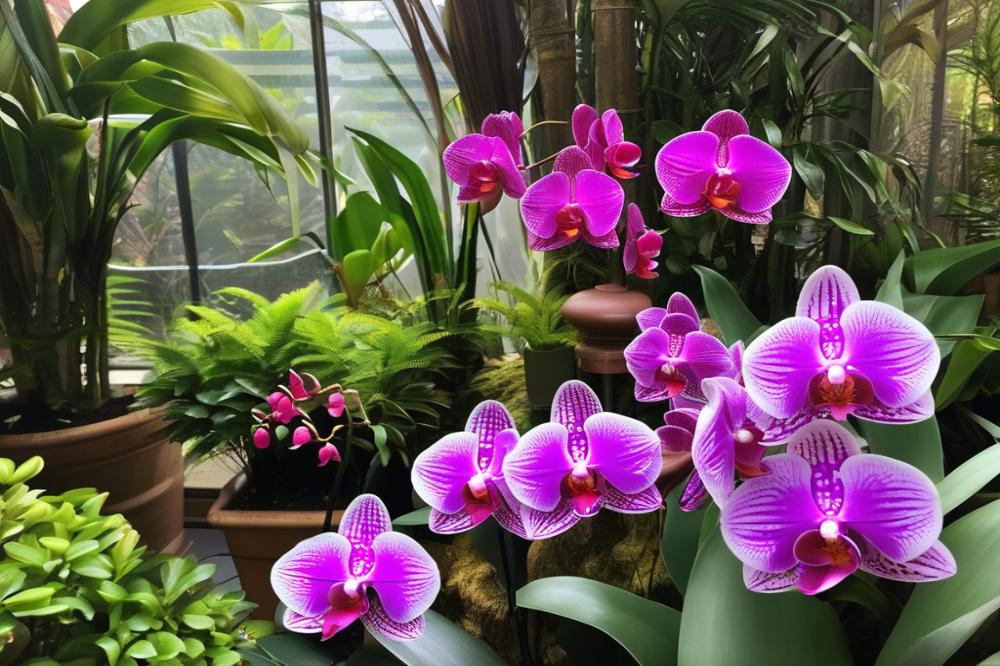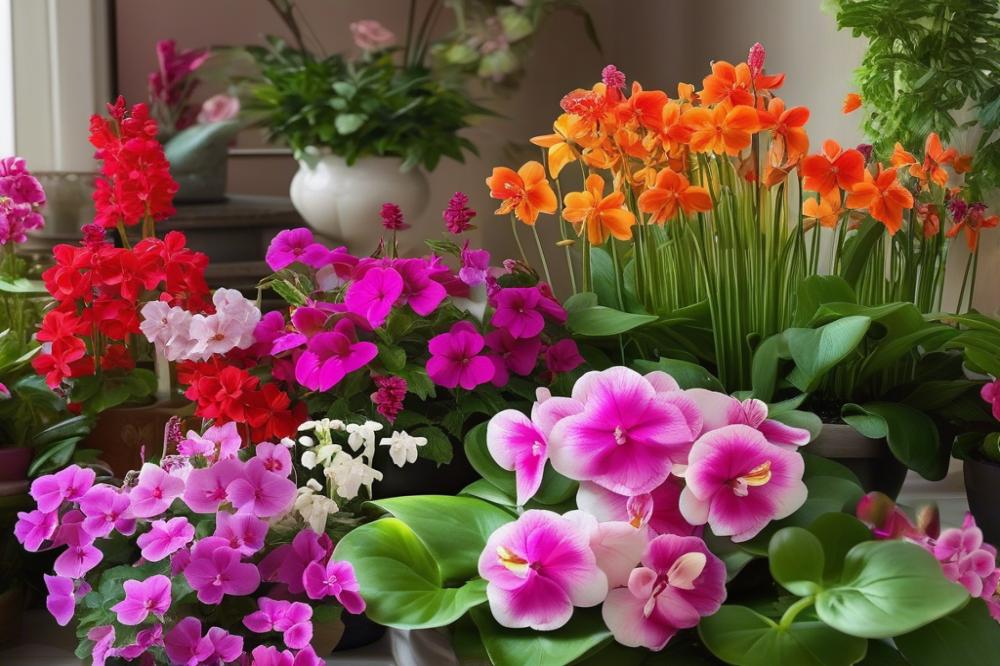The Importance of Humidity for healthy orchids
growing orchids can be a rewarding hobby, but it comes with specific requirements. Among these, maintaining adequate humidity levels is crucial for their growth. orchid humidity significantly impacts the health and vibrancy of these stunning plants. Without the right moisture in the air, even the most dedicated orchid enthusiasts may struggle to achieve beautiful blooms.
Different types of orchids have unique humidity needs. For instance, tropical orchids often thrive in environments with high humidity, while others can adapt to lower levels. This variation makes understanding the humidity requirements essential for successful orchid care. Misting orchids can be one effective way to increase moisture in the air, especially in dry indoor environments.
This necessity extends beyond watering orchids. Effective orchid potting can help maintain proper moisture levels around the roots. Using humidity trays filled with water can also create a beneficial microclimate for these plants. Additionally, air circulation must not be overlooked. Good airflow can help prevent orchid diseases that often thrive in stagnant, humid conditions.
Whether you are a novice or seasoned grower, recognizing the role of humidity in cultivation is vital. healthy orchids not only bring joy but can flourish in the right conditions. By being attentive to their unique needs, you can enhance your orchid-growing experience.
Understanding orchid humidity
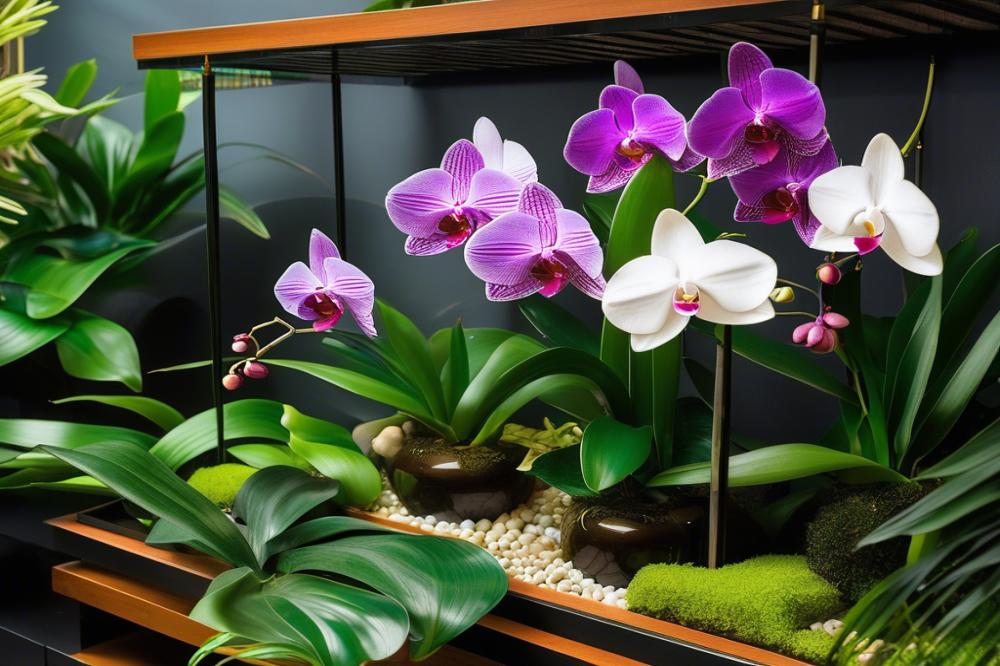

Humidity for orchids refers to the amount of moisture in the air surrounding these plants. It’s an essential factor for their overall health and growth. Indoor orchids, in particular, thrive in environments that mimic their natural habitats, often found in tropical regions. These plants absorb moisture not just through their roots but also through their leaves. Therefore, maintaining adequate humidity levels is vital.
Low humidity can lead to several problems for orchids. Without sufficient moisture, orchids struggle to breathe effectively. This affects their respiration, causing stress to the plant. When a plant experiences stress, it can reduce its growth and flowering. On the other hand, high humidity can lead to other issues, such as fungal infections and orchid diseases. Finding the right balance is crucial for successful orchid care.
Misting orchids is one common technique to boost humidity. Many growers use this method to keep their plants moist, especially during dry months. Another effective strategy involves using humidity trays filled with water and pebbles. As the water evaporates, it increases the moisture in the air around the orchids. Good air circulation is also important to prevent mold and excess moisture that can lead to diseases.
Additionally, humidity affects the hydration and nutrient uptake of orchids. When humidity levels are optimal, orchids can absorb water and nutrients more effectively. This is particularly important during the growing phase, when nutrients are necessary for healthy blooms. Conversely, if orchids are not hydrated properly, they may become dehydrated, leading to wilting or leaf drop. Proper watering practices should coincide with humidity levels to promote healthy growth.
In summary, understanding the importance of moisture in the air for growing orchids is critical. Pay attention to the environment where you pot your orchids. Monitor humidity regularly, as it plays a significant role in the health and vigor of these plants. Proper orchid care includes adjusting moisture levels in creative ways to support your blooming beauties.
Optimal Humidity Levels for Different Orchids


Orchids are intriguing plants, and they thrive best in specific climate conditions. Humidity levels play a critical role in their health. Different types of orchids have distinct humidity requirements. Understanding these needs can lead to successful orchid care.
Phalaenopsis orchids, commonly known as moth orchids, prefer humidity levels between 50% and 70%. These popular indoor orchids flourish in such conditions. They benefit from regular watering and should not be allowed to dry out between waterings.
Cattleya orchids, on the other hand, enjoy slightly lower humidity, around 40% to 60%. These vibrant flowers are often used in corsages. Misting orchids occasionally can help maintain an ideal environment in your home.
The Needs of Various Orchids
Vanda orchids crave higher humidity, ideally around 60% to 80%. These stunning plants thrive in humid conditions. However, be cautious; waterlogged roots can lead to serious orchid diseases. An open potting structure can help with air circulation and prevent excess moisture around the roots.
Oncidium orchids typically prefer humidity levels of 50% to 70%. They are known for their unique blooms and can adapt fairly well to indoor environments. Regularly using humidity trays can help mimic their natural habitat, offering the moisture they need.
Furthermore, too little humidity can be just as harmful as too much. Low humidity might cause leaf tips to turn brown and can stress the plant. In contrast, high levels of humidity can lead to mold and root rot, jeopardizing your precious orchids.
When growing orchids indoors, keep a close eye on your environment. Using a hygrometer can provide insights into current humidity levels. Proper watering is essential, but it must be paired with the right humidity for optimal growth.
Methods to Maintain Humidity for Orchids
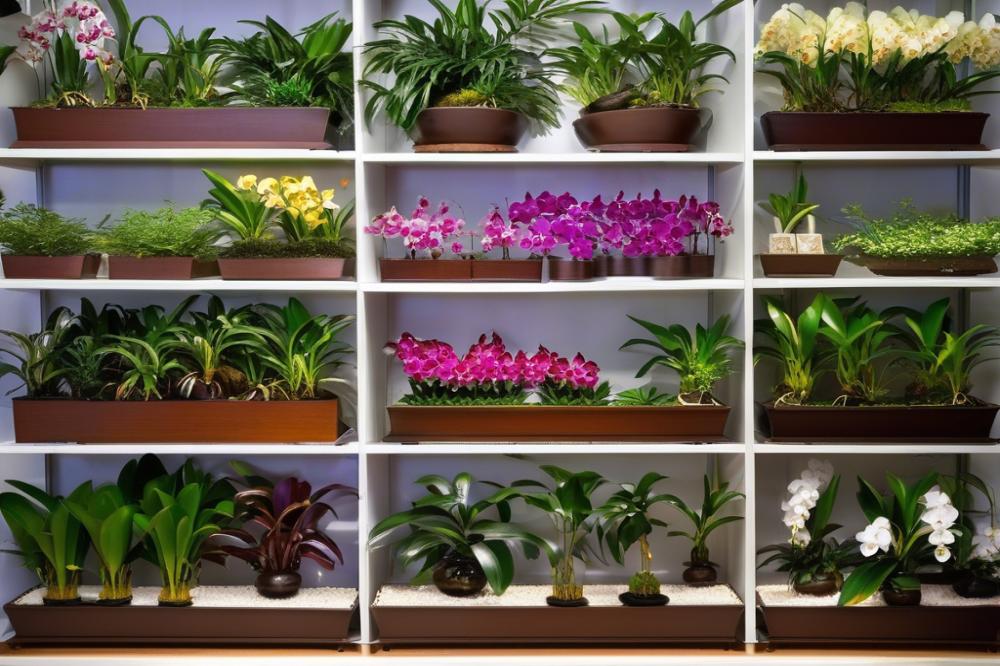

Proper humidity is vital for the health of orchids. Various techniques can help maintain the right moisture in the air. Misting orchids is a popular method. By spraying water directly on the leaves, you can quickly raise humidity levels. It’s best to do this in the morning. This timing reduces the risk of fungal diseases that thrive in damp conditions.
Using humidity trays can also be effective. These are shallow containers filled with water and stones. Place the orchids on top of the stones, ensuring the roots don’t sit in the water. As the water evaporates, it adds moisture to the surrounding air. This method works particularly well for indoor orchids.
Air circulation is another important factor. Good airflow prevents stagnant air, which can lead to issues with orchid diseases. Fans can help move air around without blowing directly on the plants. This gentle movement benefits the orchids while also ensuring humidity does not linger too long in one spot.
For those growing orchids indoors, consider using a humidifier. A small, portable humidifier can significantly enhance humidity levels. Set the device near the orchids but not too close to avoid excessive moisture directly on the plants. Keeping the humidity around 50-70% is ideal.
Grouping orchids together can also increase humidity. When plants are close, they create a microenvironment. This method encourages moisture retention as the air around them gets more humid. Be mindful, though. Proper orchid potting plays a role in drainage, which prevents overwatering while still keeping humidity in check.
Lastly, monitor the environment regularly. Keeping a hygrometer helps track the humidity levels. When changes happen, adjust your strategies accordingly. Knowing what works best for the orchids in your care allows you to make informed decisions. Maintaining appropriate humidity levels requires attention and effort, but the results are rewarding.
Impact of Humidity on Orchid Health
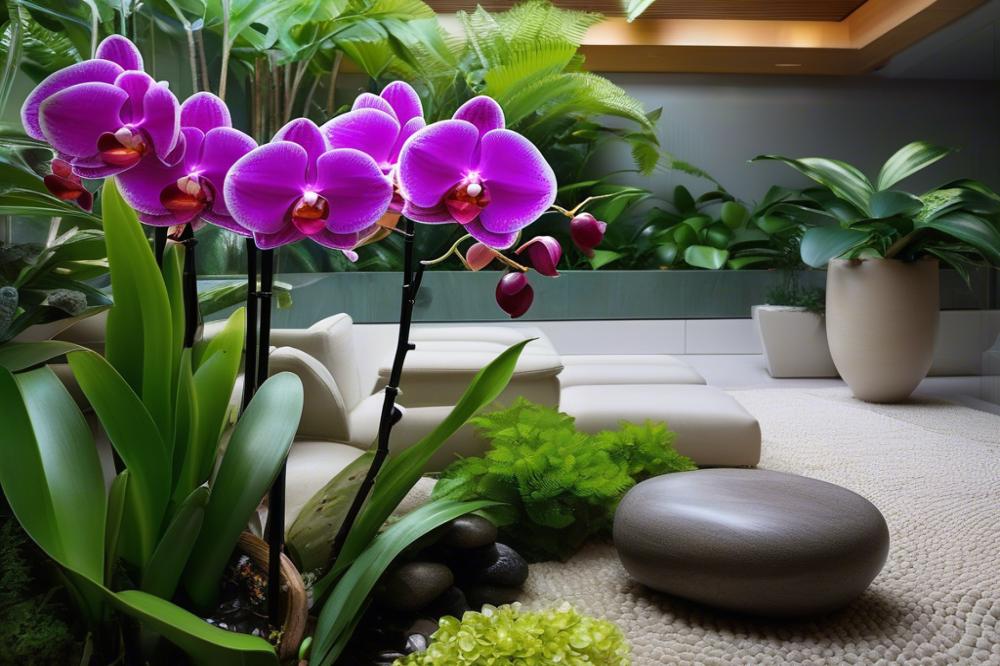

Humidity plays a crucial role in the overall health of orchids. Maintaining the right levels of moisture can make the difference between a thriving plant and one that struggles. Too little humidity often leads to problems. For example, root rot can occur when the roots dry out excessively. Conversely, excessive moisture can foster conditions for fungal infections, impacting both the foliage and roots of the plant.
When caring for indoor orchids, it’s vital to monitor humidity levels closely. Ideal conditions typically range between 40% to 70% humidity. Fluctuating outside of this range can increase the likelihood of diseases. Watering orchids becomes a delicate balance. If the air is too dry, plants may need more frequent watering to compensate. However, if humidity levels are high, overwatering can quickly become a risk. This is where orchid potting plays a significant role, as the right medium can help with drainage and moisture retention.
Misting orchids can be a great way to boost humidity. Some growers use humidity trays filled with water and pebbles to create a microclimate. This method increases moisture around the plant without soaking the roots. Remember that good air circulation is just as important as humidity. Stagnant air can lead to fungal growth, exacerbating problems.
Common orchid diseases are often tied to improper humidity. If the air is too wet, your orchids can suffer from a range of issues, including powdery mildew or leaf spots. These infections can spread quickly if left unchecked. By keeping a close eye on humidity levels, you can minimize these risks. Growing orchids is not just about beauty; it’s also about keeping them healthy and vibrant. With the right practices in place, you can enjoy a flourishing collection of these exquisite plants.
Potting and Humidity Considerations
When it comes to orchid care, potting materials are just as important as watering orchids. Using the right mix can help maintain moisture levels around the roots. A well-draining potting medium allows excess water to escape while still retaining enough humidity for healthy growth.
An ideal mixture often includes bark, sphagnum moss, and perlite. These components work together to create a balance. As a rule of thumb, bark provides good aeration, while moss can hold moisture. This combination ensures that your indoor orchids thrive.
Proper orchid potting techniques contribute significantly to humidity management. Selecting a pot with drainage holes aids in preventing overwatering. Overly damp conditions can lead to orchid diseases, which can devastate your plants. Additionally, consider the size of the pot; it should be appropriate for the orchid’s root system. A pot that’s too large can retain excess moisture, leading to rot.
Misting orchids can add extra humidity but should be done thoughtfully. Regular misting can help create a moist environment without soaking the roots. Also, placing humidity trays filled with water beneath the pots can provide consistent moisture. This setup can be particularly beneficial during dry months.
Air circulation plays a critical role in maintaining health as well. Good airflow around orchids helps to evict excess moisture from the leaves. Without proper movement, these plants may suffer from fungal issues or pests. Incorporating a small fan in the growing area can assist with this.
Overall, paying close attention to potting choices and humidity levels is essential for success in growing orchids. By thoughtfully considering the materials and techniques used, you create a stronger foundation for blossoming plants.
Final Thoughts on Humidity for Orchids
Humidity is a crucial factor in the successful cultivation of orchids. These beautiful plants thrive in conditions that mimic their natural environment. Understanding the humidity needs of your orchids will greatly enhance your ability to care for them effectively. Adjusting humidity levels can mean the difference between vibrant blooms and wilting leaves.
Growers should be proactive in monitoring their plants’ surroundings. Dry air can stress orchids, leading to poor health and reduced flowering. Regularly checking humidity levels in your growing area allows for timely adjustments. Using tools like humidifiers or pebble trays can create a more suitable atmosphere for your orchids.
Recognizing the signs of low humidity is also vital. Leaves might droop or turn brown at the edges. These indicators can guide you in making necessary changes to their environment. Orchids require attentive care to flourish, and humidity plays a significant role in their overall well-being.
In summary, nurturing your orchids involves understanding their unique needs. Prioritizing optimal humidity not only supports the plants but also enhances your gardening experience. By actively managing the moisture in the air around them, you’ll enjoy healthier orchids and more joyful blooms. So, embrace these practices and watch your orchids thrive.

